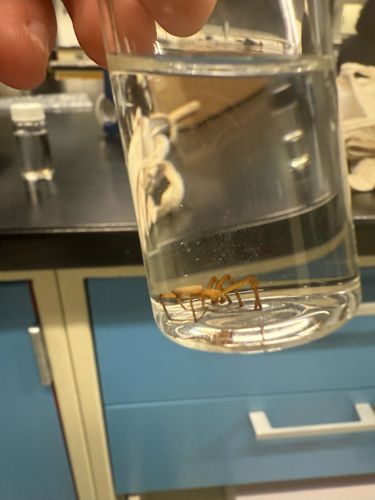Camel Spider
Scientific Name: Order Solifugae
Order & Family: Order Solifugae
Size: Typically from 1 to 7 cm (0.4 to 2.8 inches) in body length, though some species can reach up to 15 cm (6 inches) including legs.

Natural Habitat
Arid and semi-arid regions worldwide, including deserts, scrublands, and grasslands. Often found under rocks, logs, or in burrows.
Diet & Feeding
Primarily carnivorous, preying on a variety of invertebrates such as insects, spiders, scorpions, and other arachnids. Larger species may also hunt small vertebrates like lizards, snakes, and rodents. They use their large chelicerae to capture and tear apart prey.
Behavior Patterns
Nocturnal and highly active predators. Solifuges are well-known for their rapid running speed and aggressive appearance. They do not spin webs or produce venom. They use their pedipalps to capture prey and the first pair of legs as sensory organs, similar to antennae. Many species create burrows for shelter.
Risks & Benefits
Potential risks include a painful bite from their large chelicerae, though they are not venomous and thus not dangerous to humans beyond the localized pain and potential for secondary infection. Ecologically, they are beneficial as predators that help control populations of other invertebrates, including agricultural pests.
Identified on: 9/20/2025